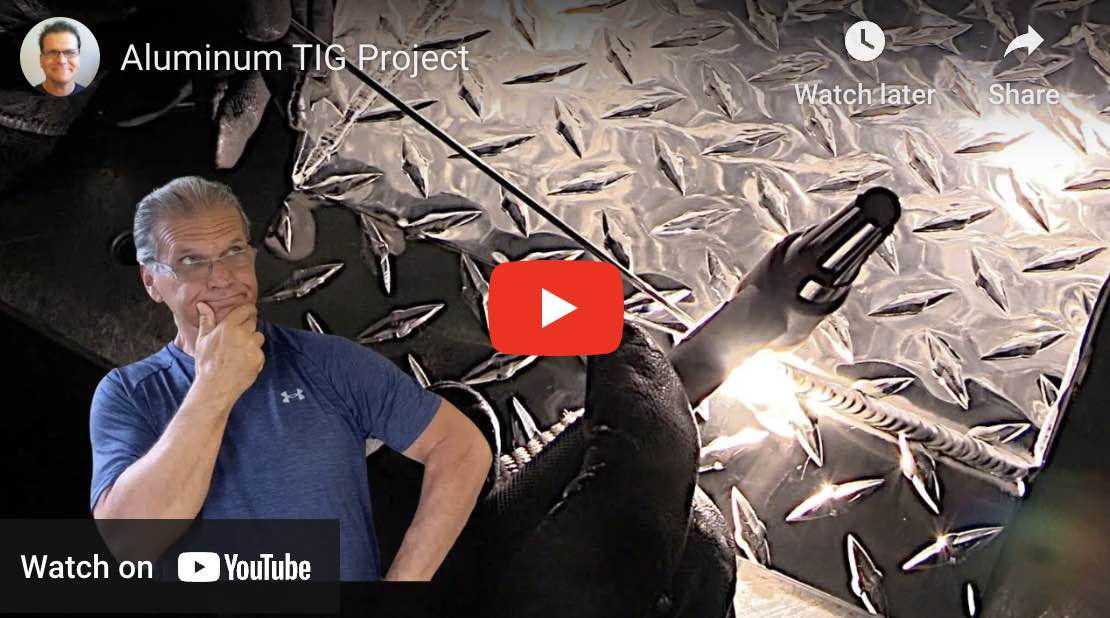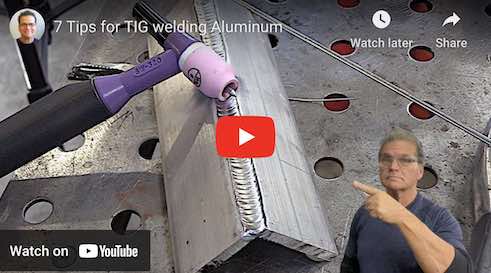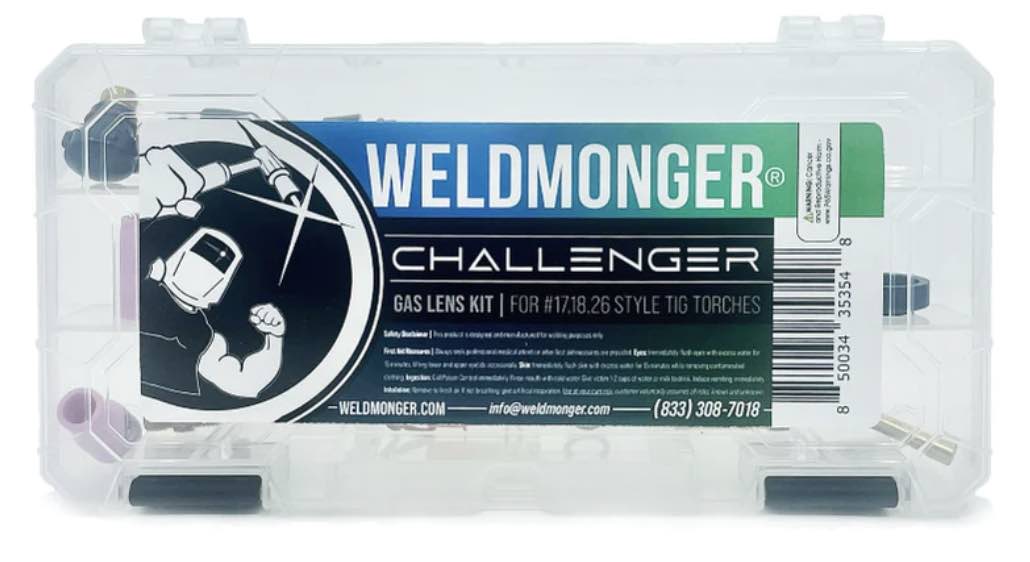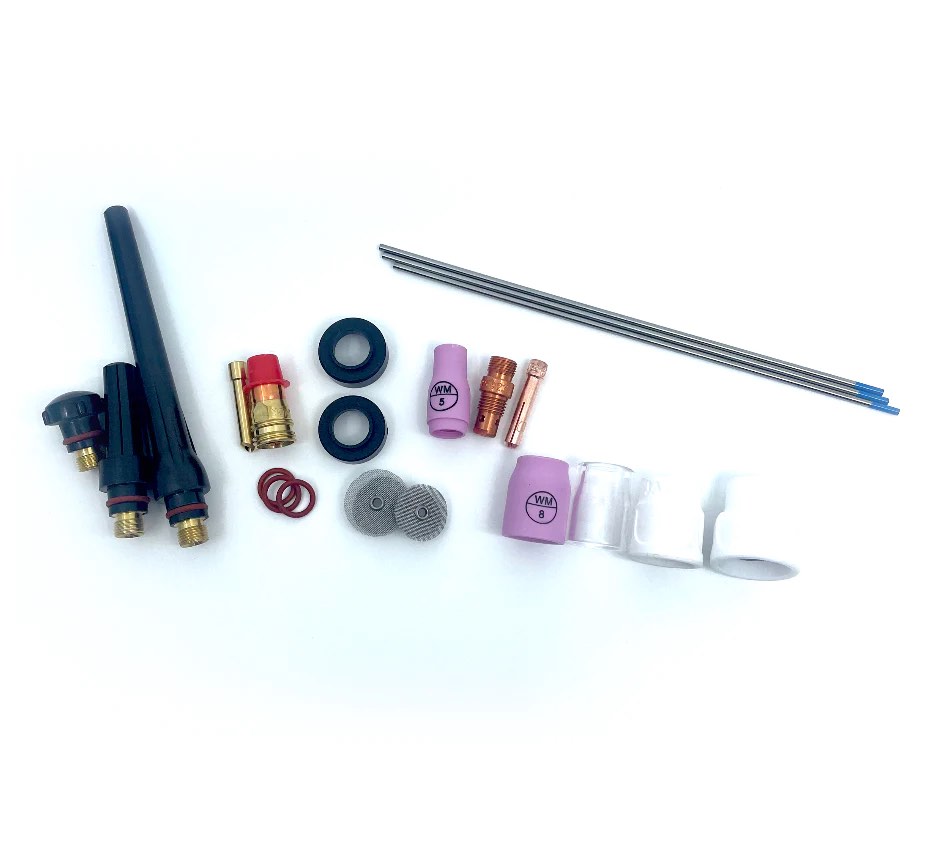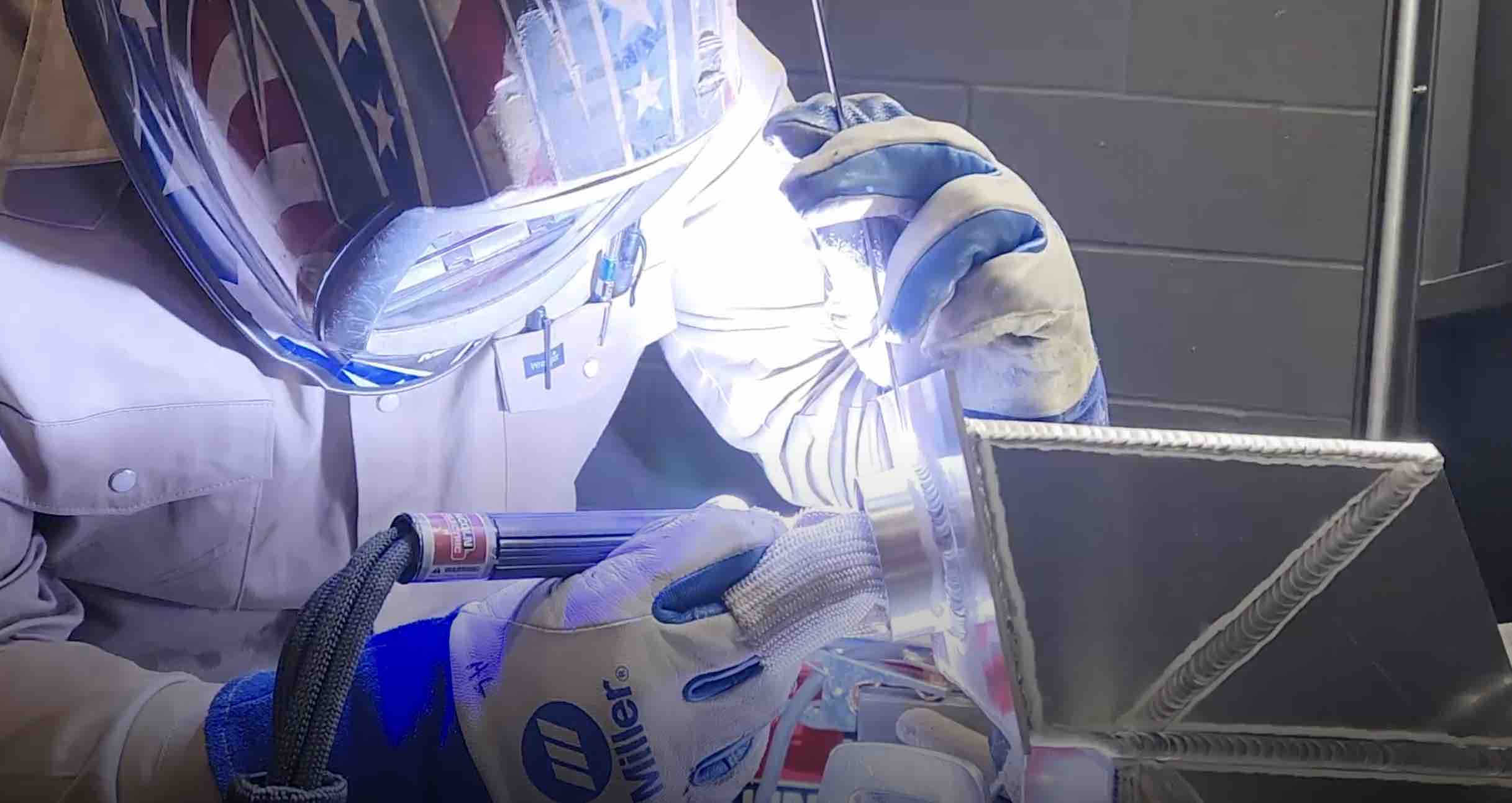TIG Welding Thin Aluminum
- HOME
- TIG WELDING ALUMINUM
- How to Tig Aluminum
- Tig Welding
Video Shows 7 Tips for TIG Welding Aluminum
...Introducing the New WeldMonger Challenger TIG kit that includes the most frequently used Cups.
The first video is on tig welding thin aluminum.
...not paper thin like a pneumatic duct on a jet, but .040" or (1mm).
But .040" is thin enough to keep you on your toes and make you think about all the many things that can go wrong.
good fitup, clean metal, right size tungsten and filler metal, all play a big part.
scroll down to learn more...
see more tig welding aluminum videos or go to the main TIG welding page
Check out a related video on Tack welding thin aluminum with no filler
- What size tungsten is best?
- what size filler rod?
- what cup works best?
- what flow rate works best on the cup?
- amperage?
- what about frequency?
- AC balance?
- waveform?
Tig welding machines used
I used 3 different machines for this video…
A miller dynasty 280… an everlast 210 ext.
...and a simple Lincoln square wave 175 amp transformer welder.
both the inverter machines have adjustable frequency but the dynasty maxes out at 400 and the everlast 210 maxes out at 250 hz
..the lincoln is only capable of 60hz.
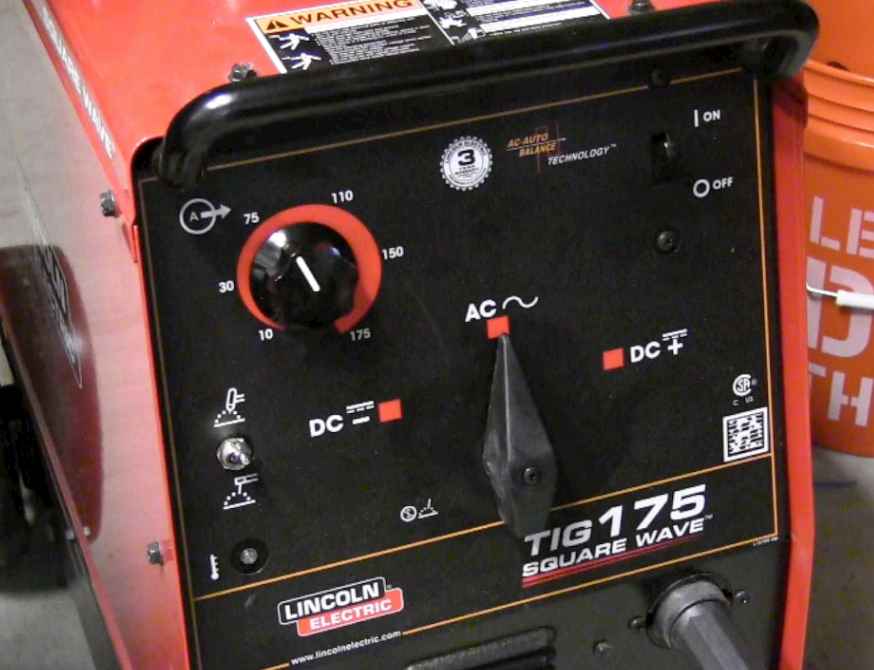
so lets talk about it...
what size and type electrode is best for tig welding .040" (1mm) aluminum?
Honestly, there is a lot of overlap when it comes to the best diameter electrode to use but a good rule of thumb is to use the smallest diameter you can without overheating the tip of the tungsten.
The reason I say that is because you get much better arc starts with a small electrode at low amperage.
when you light up on an edge at low amperage, you want the arc to initiate crisply at low amperage. you dont need a wandering arc that craps up the surface with fuzzy gray stuff.
I use 2% lanthanated for everything.
But 2% thoriated works too and lots of welders still use it.
as well as ceriated, E3, and others.
I dont use pure tungsten...mainly because I like to taper my electrodes for the type of work I usually do...and pure tungsten balls up too much for my tastes even at low amperage and just wont carry the amperage that 2% lanthanated can.
what size filler rod works best?
Another rule of thumb for tig welding sheet metal thicknesses is try not to use a filler rod that is thicker than the metal you are welding.
but that is only a guideline.
I used 1/16" (1.6m) 4043 rod for this outside corner joint in .040" and it worked out ok.
Using too small a filler rod can be a problem too.
Using an aluminum filler rod that is way too small will cause the rod tip to melt and ball before it reaches the puddle.
what cup works best?
I like gas lens cups
But sometimes a standard #5 cup works better than a gas lens for confining cleaning action and helping penetration.
yep you heard right. by confining the cleaning action, all that energy is focused in the puddle.
I will go deeper on that later.
I used a #5 standard cup, a #5 gas lens pyrex or quartz cup, and a #5 stubby gas lens setup for this video and they all worked fine.
but sometimes a larger cup helps for filling holes, or welding on edges.
what flow rate works best?
flow rates of shielding gas depend mostly on the size of cup used.
for a #5 cup, I usually like about 12-20 cfh
for a #8, I might use as much as 25-30cfh
too much flow rate on aluminum will cause an erratic arc
too little shielding will result in black spots in the puddle and a sluggish puddle.
what about amperage?
there is a rule of thumb that one amp per one thousandths of thickness (up to around .125") will get you pretty close.
Well for aluminum, you might need as much as 1.5 amps per thou.
but as it heats up, you back off to much less than that.
but 1.5 amps per thousandths along with a foot pedal is usually close enough.
what is the best frequency setting?
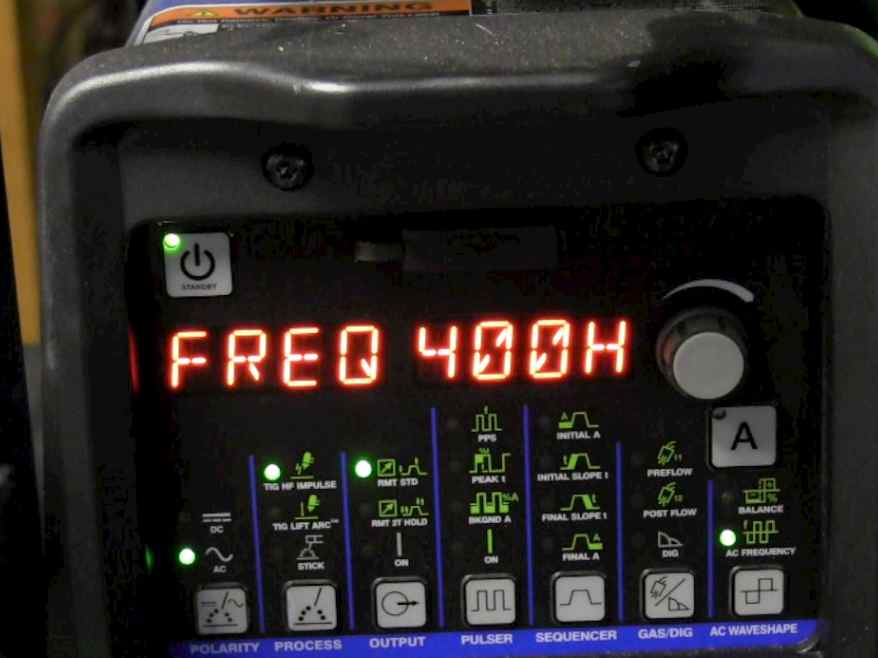
if you are using a transformer machine, you might be limited to 50 or 60 hz depending on what country you live in.
But many inverter power sources have frequency adjustment.
Frequency is how often the direction of current changes in a AC cycle.
( i am no electrician so I may not have the proper terminology)
So by increasing the frequency, you can focus the arc more.
I seem to use 120hz a lot ...in fact, I rarely use more than 120 hz
120 hz works good on most jobs I do.
But some welders swear by high frequencies like 400hz.
one thing's for sure, its loud, high pitched and annoying.
For thick aluminum, I even set an inverter to a lower frequency like 50hz to get more heat input.
AC balance
TIG welding machines are all a bit different.
One ac balance setting will not work across the board.
I am more concerned with getting a clean puddle than a narrow bead so I usually set my ac balance to 65% on a miller dynasty...or 30-35 on other imports that have the ac balance setting opposite from a Miller.
waveforms
Advanced squarewave, soft squarewave, triangle, and old sinewave are the most common.
I dont think anyone has all the answers on waveforms.
I am pretty much convinced they put them in the software more because of the fact that they can...rather than a certain application.
Still, I like to mess around with waveforms.
Triangle aka sawtooth waveform is touted to be good for thin metal so I gave it a go.
I do know that triangle waveform along with 80% helium 20% argon will puddle aluminum very precisely and quickly.
see a series on TIG welding basics

